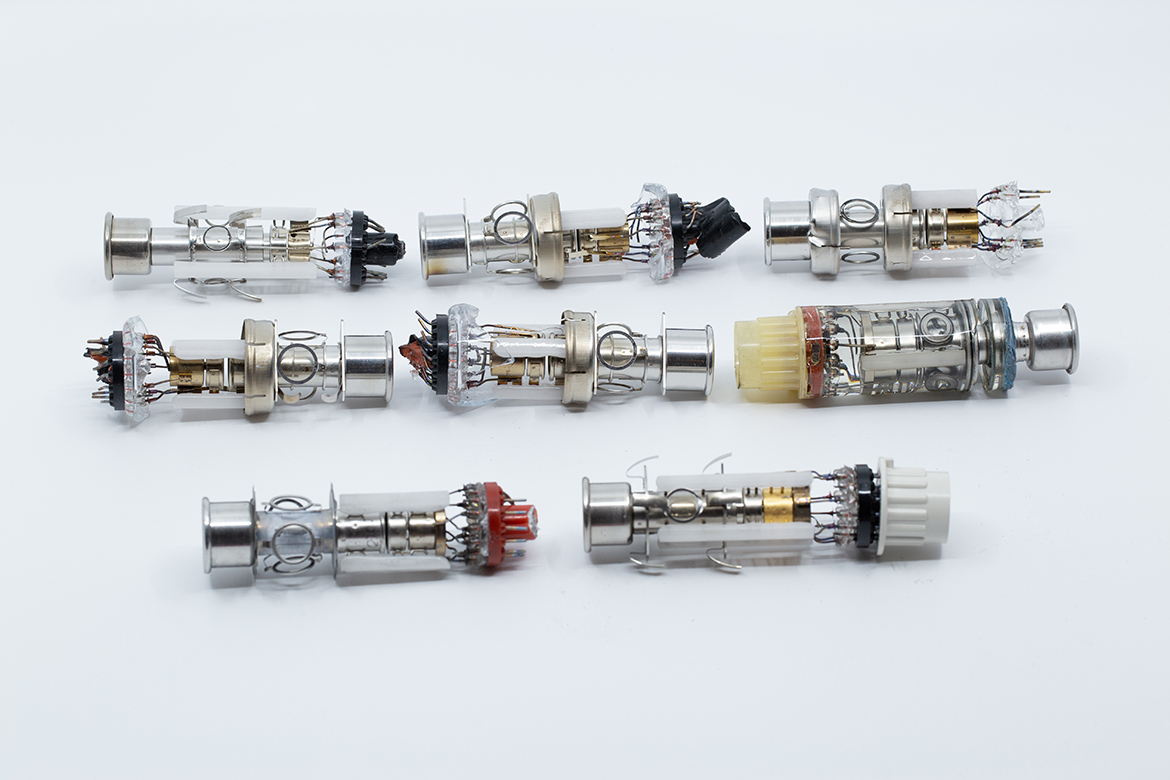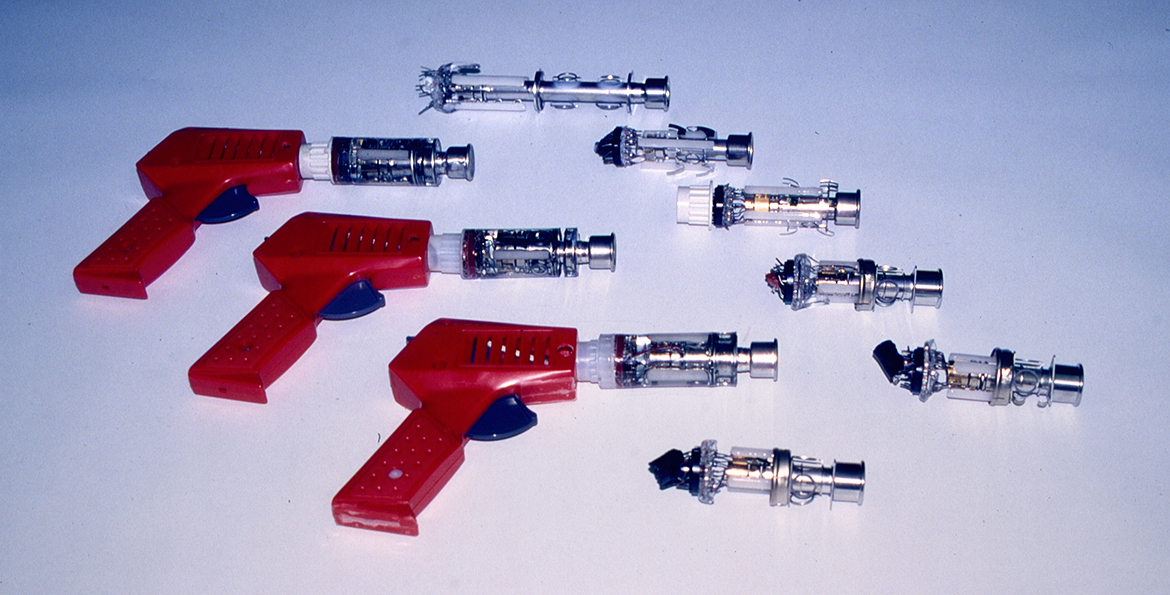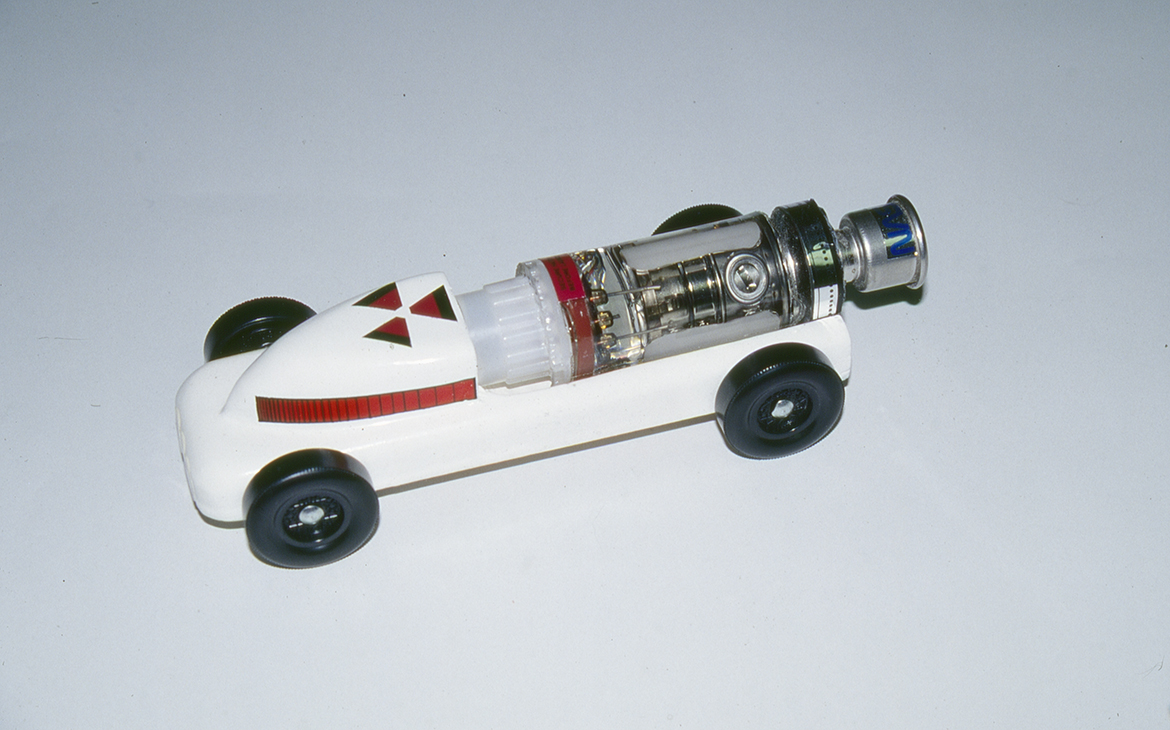
Those who know me would be stunned to learn that I have a gun collection. I acquired them in the course of my work trying to make computer images on film in the 1990s. They are electron guns, the mysterious workings at the business end of a cathode ray tube.
It is an odd phenomenon that an electron beam can be converted to a spot of light, and when scanned across a phosphor screen yields an image. The process creates what is called a television raster, the successive horizontal scanlines drawn at vertical increments that collectively form a frame of the television picture.
The intensity of the electron beam is modulated between OFF (zero), and full amplitude, over the traversal of the raster in order to render an image. It was discovered early on that the natural response of the electrons was anything but natural in its visual appearance on the phosphor screen.
In particular, the brightness of the spot of light on the phosphor screen depended on the voltage applied to one of the electrodes, but it wasn’t proportional: twice the voltage did not produce twice the light. Instead it was more like four-and-a-half times.
By experiment, it was learned that the brightness followed a power law, but it was difficult to precisely measure the exponent, designated by the greek letter gamma (γ). Eventually, the television industry settled on a value, 2.2, a little bit stronger than a square law. There were still disputes over the exact value, and how to measure it, but it was close enough, and using that value produced fairly natural looking images. The television industry moved on.
Decades later, as the computer graphics world was working on the problems of how to display computer-generated images, the same un-natural response of the cathode ray tube became an issue. Display monitors of the day were still based on CRTs, and they still needed to have the right voltage applied to the electron gun, and so an entirely new set of engineers now accompanied by computer programmers, encountered and discussed the proper value for gamma and how to use it. I was among them.
Working with Stan Kriz, the one engineer in our group who did understand vacuum tubes (he has been described as being on a first-name basis with the electron), we made a series of precision measurements under highly controlled conditions. We did not measure the light output, but instead measured the “anode current”, the number of electrons hitting the phosphor screen per second. We spent some time analyzing the data, looking for the laws of physics that were at work, and eventually derived a mathematical model that matched our observations.
During this time, there was a popular tutorial by Charles Poynton, a talented engineer and skilled presenter, titled “Gamma and its Disguises”, which set about demystifying the concept of gamma, and explained how to prepare image data for proper display. This was not an effort to quantify the value of gamma, rather it was guidance on how to properly use it, and not be confused by other controls, notably the “brightness” and “contrast” knobs found on most CRT displays.
So when I set about to write a paper about what Stan and I had learned, it was only natural to title it “Behind Gamma’s Disguise”. And I introduced it with a picture of my gun collection.



